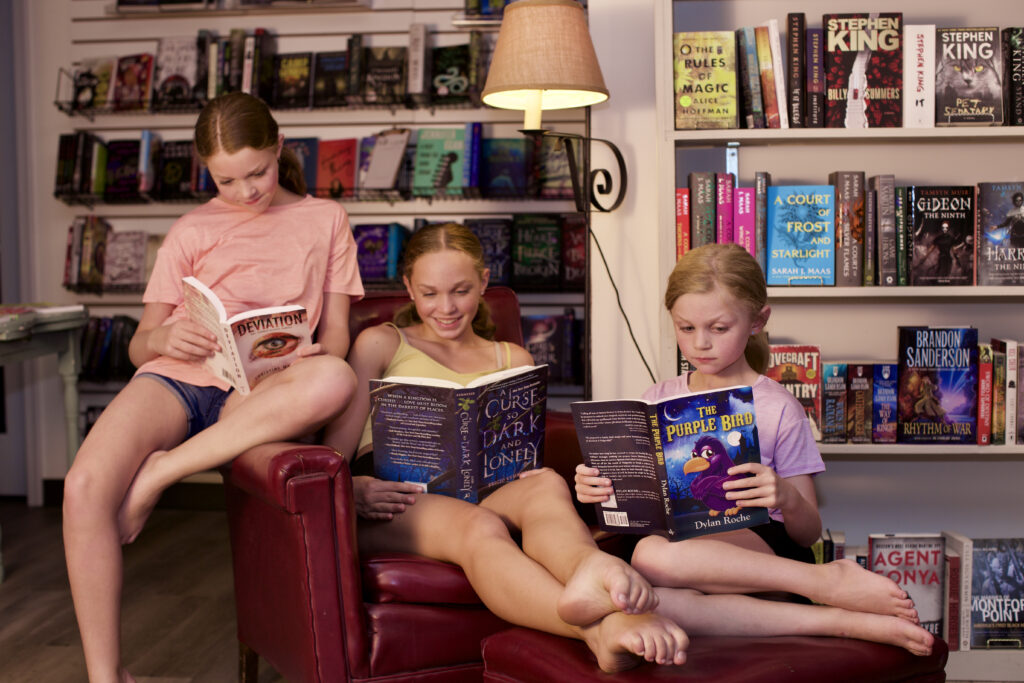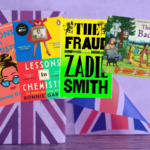
“My child’s teacher said they are only reading at a level G and she’s supposed to be reading at a J…I don’t know what that means…can you help?!”
The number of parents who come into our bookstore and learning center with concerns like this is far too many to count. Since leaving the classroom a few years ago and entering into private education services and bookstore ownership, I have gained an entirely new perspective of the state of reading education, how our area kids are doing, how families can help, and how we can support them. Here’s a little bit of what I’ve learned:
It’s not only about exposure…

It was once believed that reading is organic and if exposed to books, children will learn to read naturally; however, research has discovered that this is NOT true for most readers. Exposing children to books at a young age is critical to early reading skills, but they will not organically learn to read. Children need to be systematically taught.
So how should they be taught?
That is the million dollar question. Actually, it’s the $1.3 billion dollar question. School districts spend upwards of a billion dollars a year on reading programs and about $60 million of that has gone to Heinemann, the publisher of Fountas and Pinnell (F&P), the system that levels students like the parent whose child is reading at a “level G.” With so much money being spent on the program, and so many districts and schools using the system, one may assume that it must be the best, right?
Many reading specialists, like myself, have been voicing our concerns against this one-size-fits-all approach, which began as a whole word method of reading instruction (initially lacking in phonics instruction).Great teachers will supplement the program with solid phonics instruction to support the needs of every child, and we hope that this will patch kids through; however, I think many parents will agree…kids are struggling to be great readers.
Debunking F&P
Here’s why I don’t think the F&P assessment is a fair and accurate reflection of how our children are reading: the F&P assessment assumes that the children are being taught to read using the F&P system, and I can guarantee you that they are not. Teachers are not using the system because there is research that has shown that the founders of the system used methods that have been proven to be ineffective and even worse: problematic and detrimental to readers.

Part of the method asks children to look at a picture and then a word and make a guess as to what the word is. They are to use their cueing system to try to read the new vocabulary. We know that this leads to children guessing at unfamiliar words rather than sounding them out which ultimately affects comprehension. The issue is that if we teach children to read by memorizing words, like “sight words” and then hand them books with words that they don’t know, they may feel lost, ignorant, sad, and disengaged.
Lack of Consistency
Lastly, I’ve found that as a bookstore owner, the book publishers, curriculum designers, and authors haven’t seemed to come together to create books that align with how children learn to read. The “I Can Read,” “Step into Reading,” and other leveled reading book series are either not engaging or are not aligned to the sequence of how children are taught to read. Young readers learning how to sound out words are shown a word like “dolphin” in Kindergarten when they have not learned that /ph/ says /f/ sound yet! Sigh.
The Bottom Line
Now that everyone who made it this far is a reading expert, I’ll finish with one tiny nugget of advice. Don’t worry so much about the level. Instead, pay close attention to your child’s reading engagement, because a child who doesn’t want to open a book is always the hardest reader to help. In my experience, when we worry a bit less about the level and instead focus on growth and engagement, not only will our children learn to read, but they’ll love doing it. By the way, when was the last time you cracked open a book for 20 minutes a night?! [wink]





 Masquerade…Annapolitans on Parade
Masquerade…Annapolitans on Parade